When I taught guitar in the elementary general music classroom, planning was the key to our success. The environment was set up with pairs of chairs facing a guitar on a guitar stand Two children would share a guitar. The student on my right was the “pilot” and the student to my left was the “co-pilot”. I used the following system with kids from first grade to fifth grade with dreadnought guitars.
Yes, dreadnoughts are large for first graders. But first graders aren't going to stay that size forever. They're going to get larger and with every month, those guitar will start to feel smaller to them.
It's very easy to drop a guitar. Just as it is easy to drop a guitar, it's hard to pass a guitar to someone else without it slipping, falling, and breaking. This was the system I taught the children.
It's very easy to drop a guitar. Just as it is easy to drop a guitar, it's hard to pass a guitar to someone else without it slipping, falling, and breaking. This was the system I taught the children.
“Four Hands on the neck.” - That meant that the pilot and co-pilot had to lean forward or stand up and put their four hands on the neck of the guitar as if they were holding a baseball bat and freeze in place while I observed the entire class to make sure we are all on the same page.
“Do-si-do.” - I taught the children that “do-si-do” was a dance move in square dancing and that getting the guitar into their lap was going to be similar to a dance that they would learn to perform. On the command of “do-si-do”, they would take the guitar out of the guitar stand and the co-pilot would help position the guitar in the pilot’s lap.
Older students were sometimes taught to cross their legs. All students positioned the bump on the side of the guitar’s side resting on their thigh while they hugged the guitar’s body close to their own body with their right arm and hand. Their left hand was to hold the neck in the vicinity of the top frets by the headstock.
Transitioning the Guitar From the Pilot to the Co-pilot
I designed a way to transition to car guitar to the co-pilot that didn't require the guitar to be lifted at all.
Older students were sometimes taught to cross their legs. All students positioned the bump on the side of the guitar’s side resting on their thigh while they hugged the guitar’s body close to their own body with their right arm and hand. Their left hand was to hold the neck in the vicinity of the top frets by the headstock.
Transitioning the Guitar From the Pilot to the Co-pilot
I designed a way to transition to car guitar to the co-pilot that didn't require the guitar to be lifted at all.
“Slide”
I would give the command “slide” and the pilot would slide guitar diagonally off their thigh to the left and over to the accepting hands and thigh of the co-pilot. The neck kept pointing to the right and the guitar’s body was almost always in either the pilot’s or co-pilot’s lap.
I would give the command “slide” and the pilot would slide guitar diagonally off their thigh to the left and over to the accepting hands and thigh of the co-pilot. The neck kept pointing to the right and the guitar’s body was almost always in either the pilot’s or co-pilot’s lap.
The same process was done in reverse for getting the guitar back to the pilot.
Getting the Guitar Back Into the Guitar Stand
I would start with “four hands on the neck”. The children would freeze in that position. Once I determined everyone had done that command, I would say, “Put your guitar in the guitar stand and freeze.” which required that they not take their hands off the neck.
I would then go to each guitar and check that each it was nestled properly in the guitar stand. Then, and only then I would point to the pilot and co-pilot and say “You may let go and sit down”. If I saw any deviation from my commands, they soon realized I was displeased and they would have to start over.
The key elements when introducing this is to dead serious, go slowly, freeze on each step of the process, and make certain that you make direct eye contact with each student in between each step.
This works. As the children became more adept at handling the guitar, this plan was modified to refect their increased ability.
I taught thousands of children this system. NOT ONCE was a guitar ever droped while being picked up or transitioned between students.
I never saw a better system in another school or classroom.
If you do see a better was of picking up and sharing guitars that work with first through fifth grade, let me know.
The accompanying video is a second grade class.
Until then, please feel free to follow this foolproof plan.
Here is a video of a second grade class in action.
Getting the Guitar Back Into the Guitar Stand
I would start with “four hands on the neck”. The children would freeze in that position. Once I determined everyone had done that command, I would say, “Put your guitar in the guitar stand and freeze.” which required that they not take their hands off the neck.
I would then go to each guitar and check that each it was nestled properly in the guitar stand. Then, and only then I would point to the pilot and co-pilot and say “You may let go and sit down”. If I saw any deviation from my commands, they soon realized I was displeased and they would have to start over.
The key elements when introducing this is to dead serious, go slowly, freeze on each step of the process, and make certain that you make direct eye contact with each student in between each step.
This works. As the children became more adept at handling the guitar, this plan was modified to refect their increased ability.
I taught thousands of children this system. NOT ONCE was a guitar ever droped while being picked up or transitioned between students.
I never saw a better system in another school or classroom.
If you do see a better was of picking up and sharing guitars that work with first through fifth grade, let me know.
The accompanying video is a second grade class.
Until then, please feel free to follow this foolproof plan.
Here is a video of a second grade class in action.
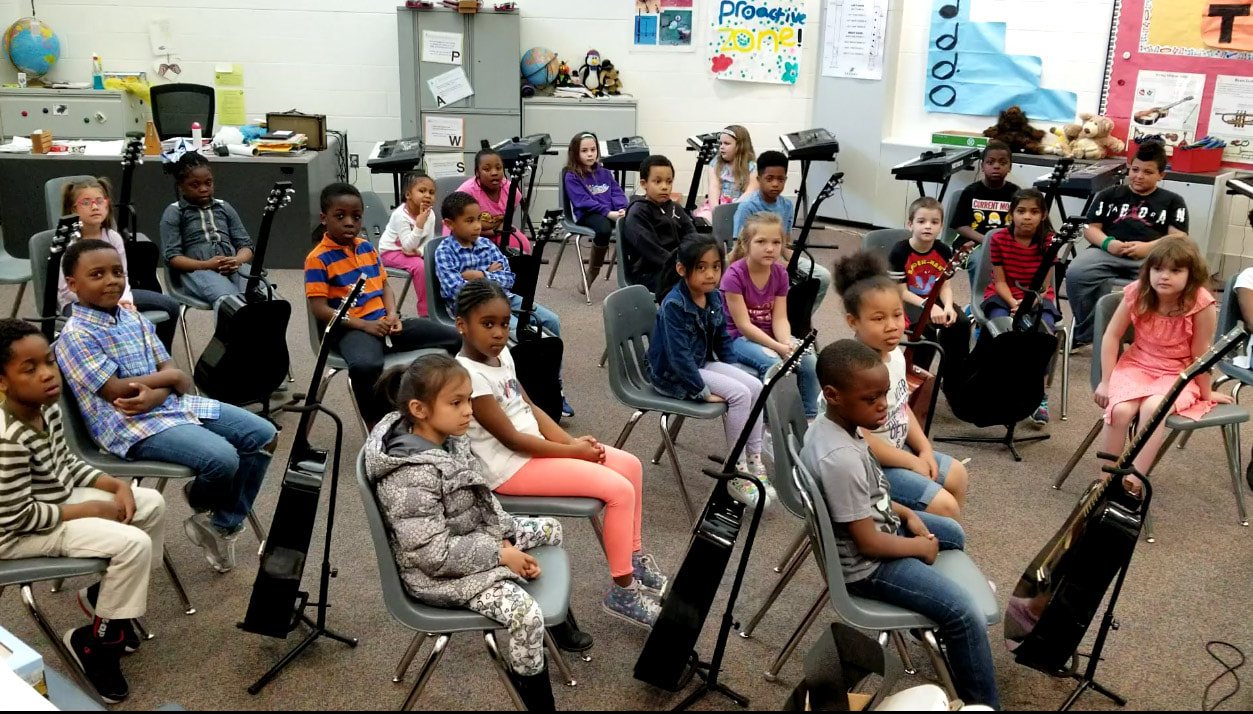
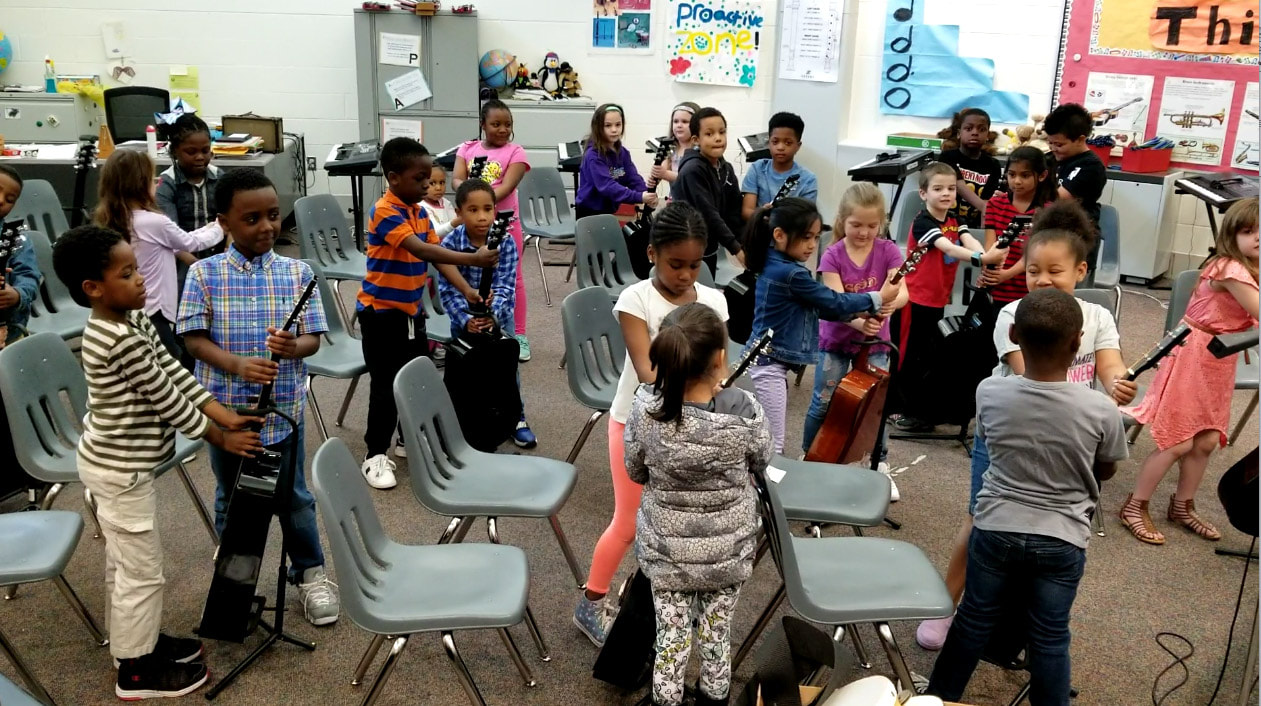
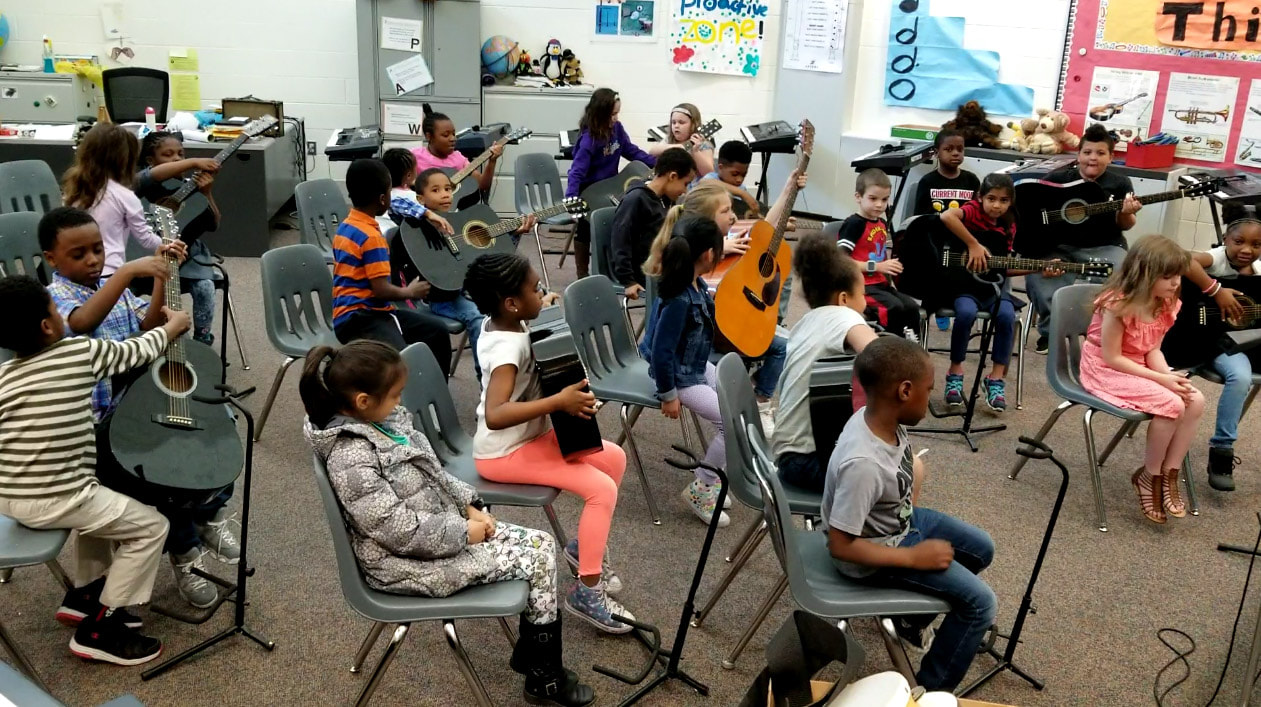
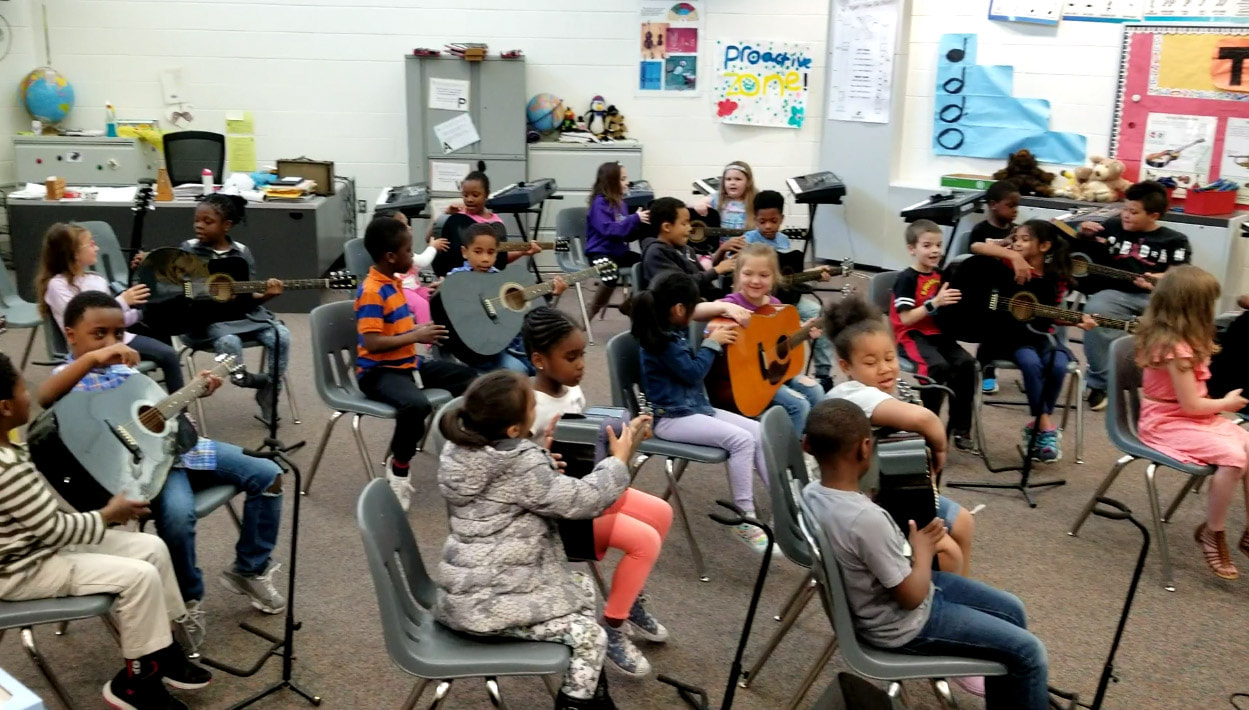
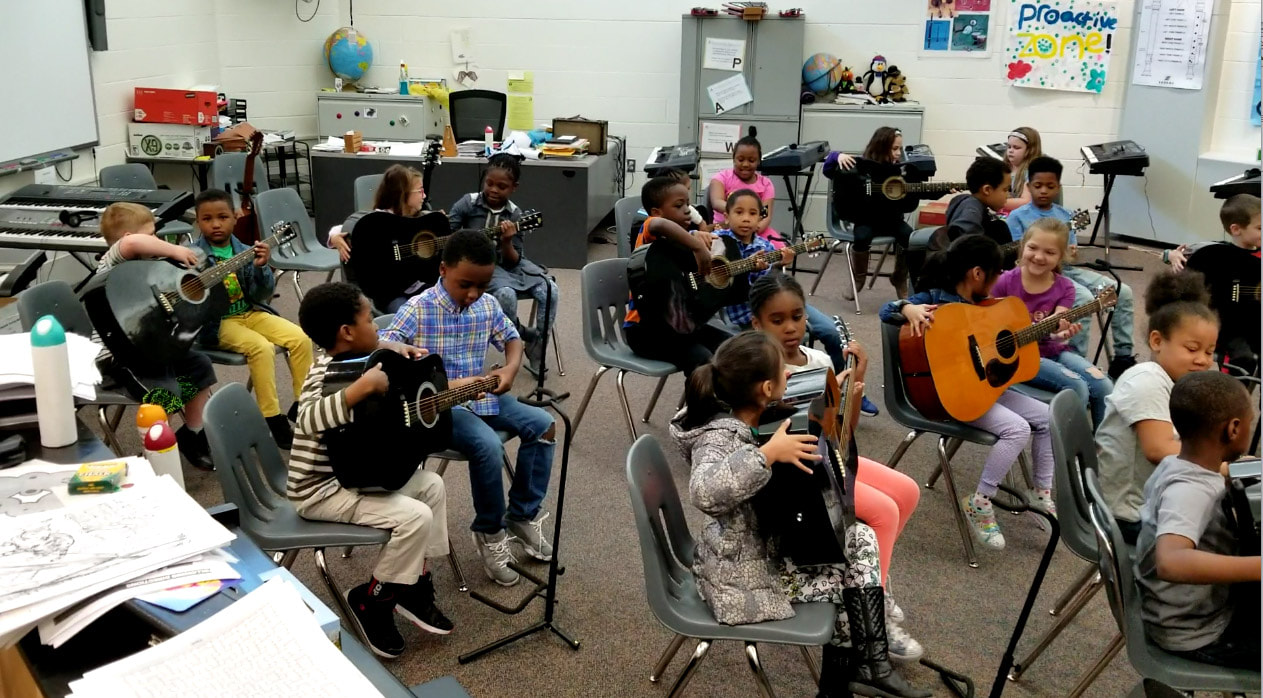
 RSS Feed
RSS Feed